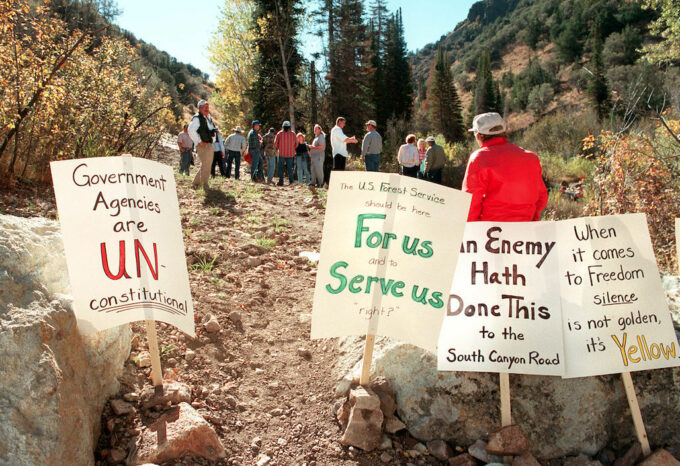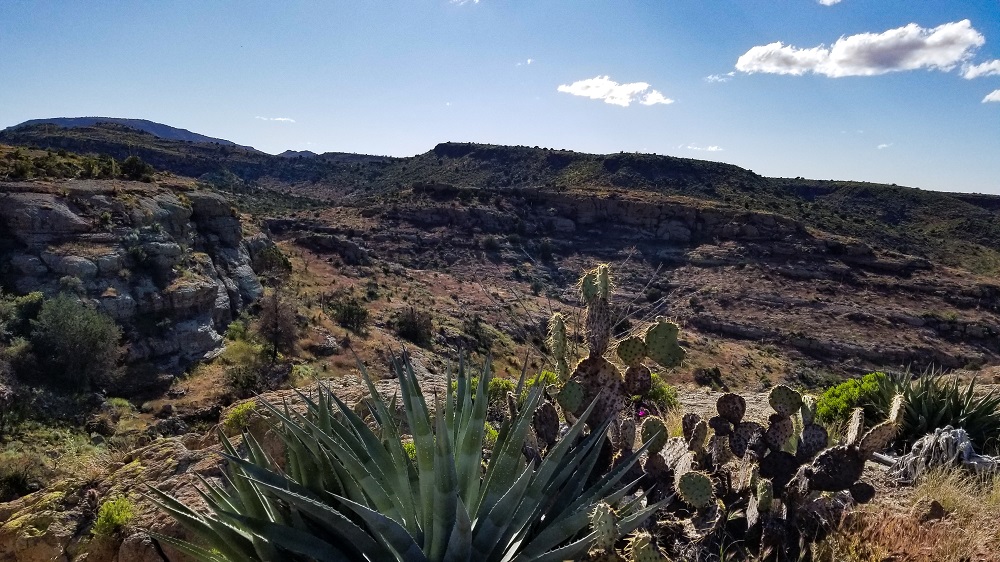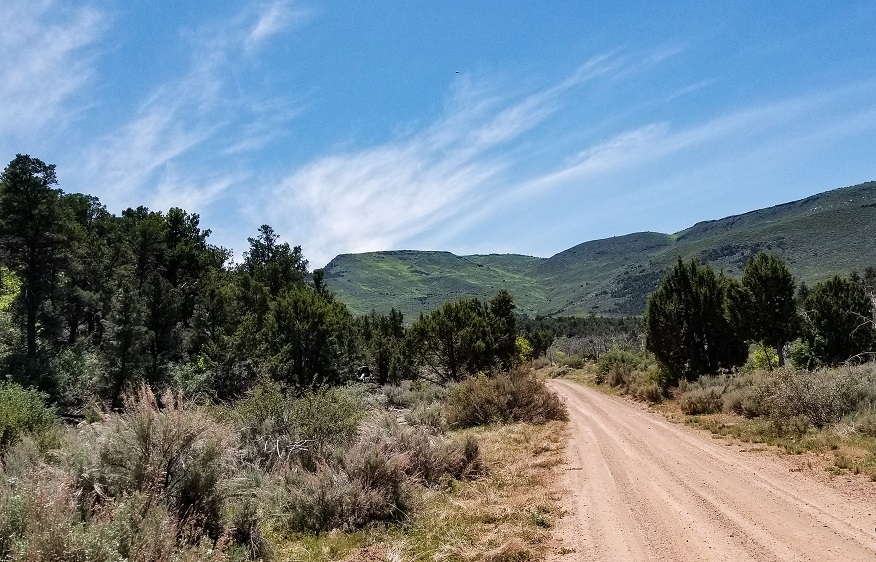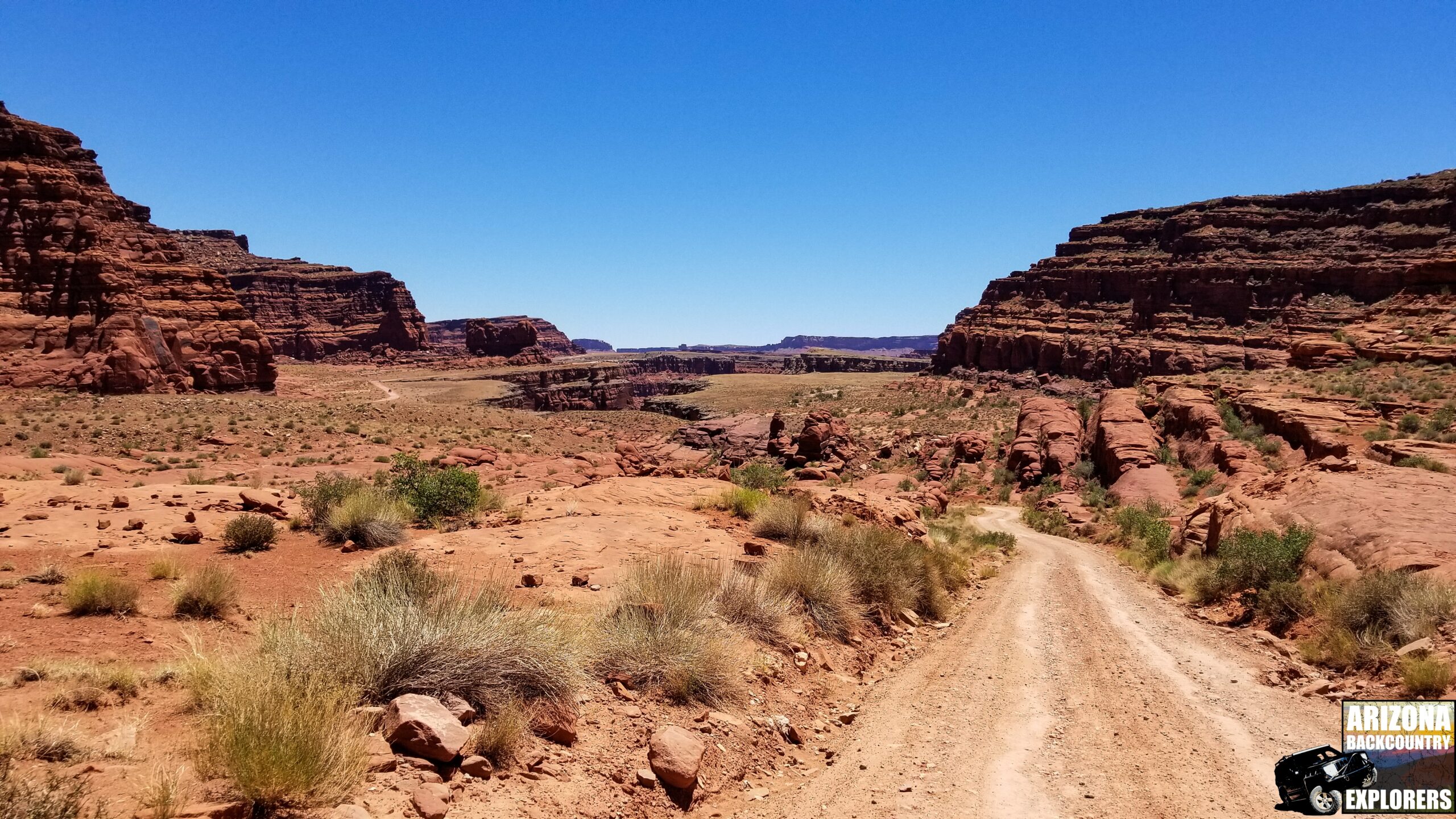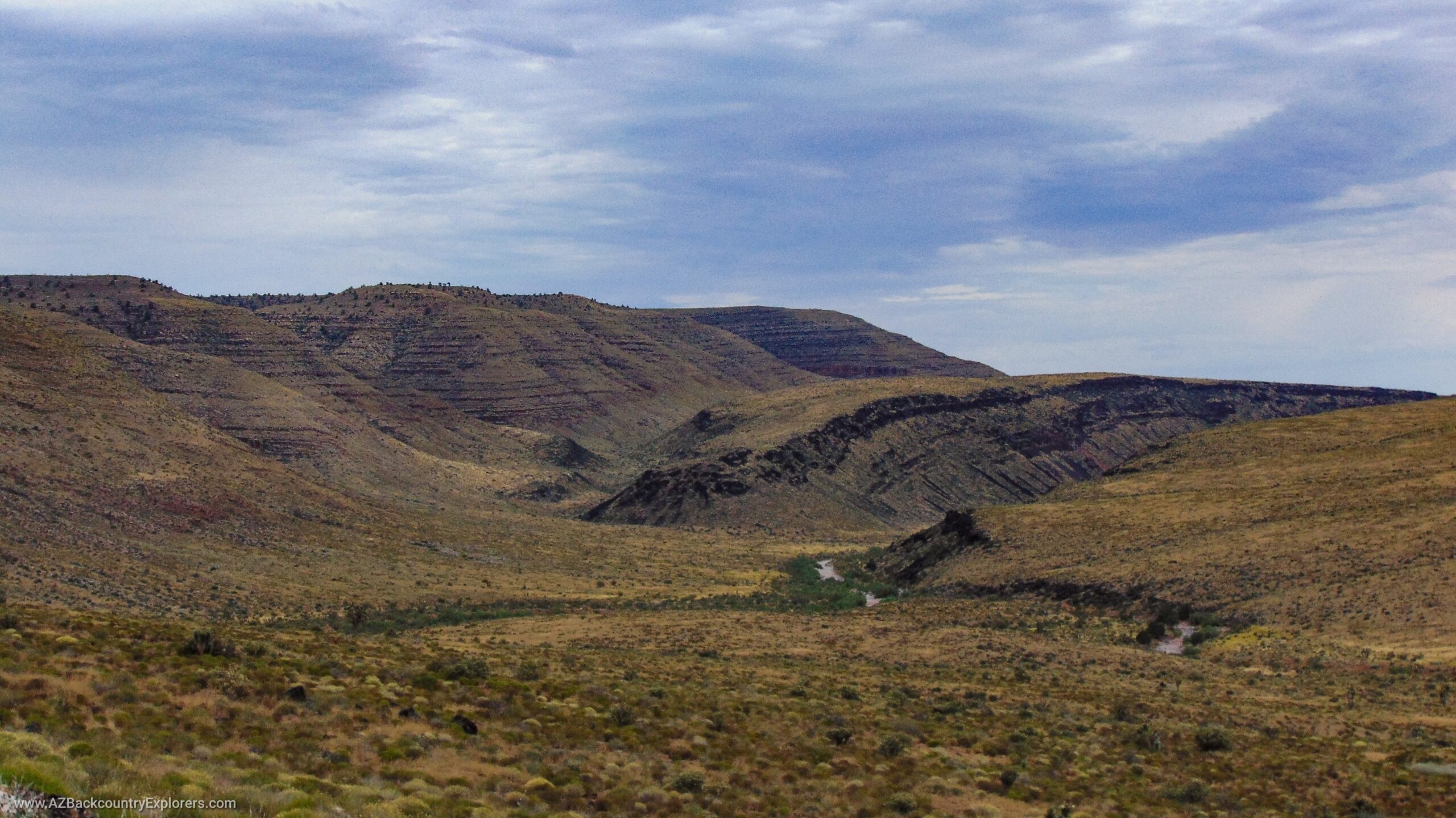Your cart is currently empty!
Posted in
This article was originally written by Henry Lamb and published in the January/February 1997 edition of ECO Logic Magazine on page 8.
This article is edited by Kevin Allard with notes and links for the reader.
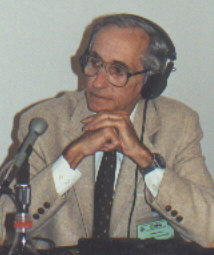
Henry Lamb was among several experts on Global Governance and published nearly 1 million words exposing the global agenda. Between 1994 and 2010, Lamb traveled the world attending United Nations conferences and disseminating the information to the public. His work is fundamental to the current land use issues we deal with every day and is directly relevant to motorized prohibitions on public lands. Lamb was among the first to expose the Federal Government and UN agenda to close roads on public lands in the 1990s.
To the framers of the U.S. Constitution, property was as sacred as life and liberty. The inalienable right to own — and control the use of — private property is perhaps the single most important principle responsible for the growth and prosperity of America. It is a right that is being systematically eroded.
Private ownership of land is not compatible with socialism, communism, or with global governance as described by the United Nations. Stalin, Hitler, Castro, and Mao – all took steps to forcefully nationalize the land as an essential first step toward controlling their citizens. The UN, without the use of military force, is attempting to achieve the same result.
The land policy of the United Nations was first officially articulated at the United Nations Conference on Human Settlements (Habitat I), held in Vancouver, May 31 – June 11, 1976. Agenda Item 10 of the Conference Report sets forth the UN’s official policy on land. The Preamble says:
“Land…cannot be treated as an ordinary asset, controlled by individuals and subject to the pressures and inefficiencies of the market. Private land ownership is also a principal instrument of accumulation and concentration of wealth and therefore contributes to social injustice; if unchecked, it may become a major obstacle in the planning and implementation of development schemes. The provision of decent dwellings and healthy conditions for the people can only be achieved if land is used in the interests of society as a whole. Public control of land use is therefore indispensable….”
The Preamble is followed by nine pages of specific policy recommendations endorsed by the participating nations, including the United States. Here are some of those recommendations:
Recommendation A.1
(b) All countries should establish as a matter of urgency a national policy on human settlements, embodying the distribution of population…over the national territory.
(c)(v) Such a policy should be devised to facilitate population redistribution to accord with the availability of resources.
Recommendation D.1
(a) Public ownership or effective control of land in the public interest is the single most important means of…achieving a more equitable distribution of the benefits of development whilst assuring that environmental impacts are considered.
(b) Land is a scarce resource whose management should be subject to public surveillance or control in the interest of the nation.
(d) Governments must maintain full jurisdiction and exercise complete sovereignty over such land with a view to freely planning development of human settlements….
Recommendation D.2
(a) Agricultural land, particularly on the periphery of urban areas, is an important national resource; without public control land is prey to speculation and urban encroachment.
(b) Change in the use of land…should be subject to public control and regulation.
(c) Such control may be exercised through:
(i) Zoning and land-use planning as a basic instrument of land policy in general and of control of land-use changes in particular;
(ii) Direct intervention, e.g. the creation of land reserves and land banks, purchase, compensated expropriation and/or pre-emption, acquisition of development rights, conditioned leasing of public and communal land, formation of public and mixed development enterprises;
(iii) Legal controls, e.g. compulsory registration, changes in administrative boundaries, development building and local permits, assembly and replotting.
Recommendation D.3
(a) Excessive profits resulting from the increase in land value due to development and change in use are one of the principal causes of the concentration of wealth in private hands. Taxation should not be seen only as a source of revenue for the community but also as a powerful tool to encourage development of desirable locations, to exercise a controlling effect on the land market and to redistribute to the public at large the benefits of the unearned increase in land values.
(b) The unearned increment resulting from the rise in land values resulting from change in use of land, from public investment or decision or due to the general growth of the community must be subject to appropriate recapture by public bodies.
Recommendation D.4
(a) Public ownership of land cannot be an end in itself; it is justified in so far as it is exercised in favour of the common good rather than to protect the interests of the already privileged.
(b) Public ownership should be used to secure and control areas of urban expansion and protection; and to implement urban and rural land reform processes, and supply serviced land at price levels which can secure socially acceptable patterns of development.
Recommendation D.5
(b) Past patterns of ownership rights should be transformed to match the changing needs of society and be collectively beneficial.
(c)(v) Methods for the separation of land ownership rights from development rights, the latter to be entrusted to a public authority.
The official U.S. delegation that endorsed these recommendations includes familiar names. Carla A. Hills, then-Secretary of Housing and Urban Development became George Bush’s Chief trade negotiator. William K. Reilly, then-head of the Conservation Foundation, became Bush’s Administrator of the Environmental Protection Agency. Among the NGOs (non-government organizations) present, were: the International Planned Parenthood Federation; World Federation of United Nations Associations; International Union for the Conservation of Nature (IUCN); World Association of World Federalists; Friends of the Earth; National Audubon Society; National Parks and Conservation Association; Natural Resources Defense Council; and the Sierra Club.1
These ideas came to America in the form of the Federal Land Use Planning Act which failed twice in Congress during the 1970s. Federal regions were created and the principles of the UN land policy were implemented administratively to the maximum extent possible. NGOs were at work even then, lobbying for the implementation of UN land policy at the state and local levels. Both Florida and Oregon enacted state Comprehensive Planning Acts. Florida created state districts and multi-county agencies to govern land and water use. Most states, however, were slow to embrace the UN initiative toward centralized planning and land management.
By 1992, the UN had learned to tone down its language and strengthen its arguments. The UN, working in collaboration with its incredible NGO structure, operating at the behest of the International Union for the Conservation of Nature (IUCN); the World Wide Fund for Nature (WWF); and the World Resources Institute (WRI), made sure that the decade of the 1980s was awash with propaganda about the loss of biodiversity and the threat of global warming.
The foundation for the propaganda campaign may be found in three publications published jointly by the UN and its NGO collaborators: World Conservation Strategy, (UNEP, IUCN, WWF, 1980); Caring for the Earth, (UNEP, IUCN, WWF, 1991); and Global Biodiversity Strategy, (UNEP, IUCN, WRI, 1992). These documents, along with Our Common Future, the report of the 1987 Brundtland Commission (UN Commission on Environment and Development) set the stage for Earth Summit II, the UN Conference on Environment and Development (UNCED) in Rio de Janeiro in 1992.
This conference produced Agenda 21, the ultimate plan of action to save the world from human activity. The document echoes the 1976 document on land use policy, though in somewhat muted terms. From Section II, Chapter 10 (page 84):
“Land is normally defined as a physical entity in terms of its topography and spatial nature; a broader integrative view also includes natural resources: the solid, minerals, water and biota that the land comprises. Expanding human requirements and economic activities are placing ever increasing pressures on land resources, creating competition and conflicts and resulting in suboptimal use of both land and land resources. It is now essential to resolve these conflicts and move towards more effective and efficient use of land and its natural resources. Opportunities to allocate land to different uses arise in the course of major settlement or development projects or in a sequential fashion as land becomes available on the market. This provides opportunities…to assign protected status for conservation of biological diversity or critical ecological services.”
Objective 10.5
The broad objective is to facilitate the allocation of land to the uses that provide the greatest sustainable benefits and to promote the transition to sustainable and integrated management of land resources:
(a) To review and develop policies to support the best possible use of land and the sustainable management of land resources, by no later than 1996;
(b) To improve and strengthen planning, management, and evaluation systems for land and land resources, by no later than 2000;
(d) To create mechanisms to facilitate the active involvement and participation of all concerned, particularly communities and people at the local level, in decision-making on land use and management, by not later than 1996.
Activities 10.6:
(c) Review the regulatory framework, including laws, regulations, and enforcement procedures, in order to identify improvements needed to support sustainable land use and management of land resources and restrict the transfer of productive arable land to other uses;
(e) Encourage the principle of delegating policy-making to the lowest level of public authority consistent with effective action and a locally driven approach.
Activities 10.7:
(a) Adopt planning and management systems that facilitate the integration of environmental components such as air, water, land, and other natural resources using landscape ecological planning… for example, an ecosystem or watershed;
(b) Adopt strategic frameworks that allow the integration of both developmental and environmental goals; examples of those frameworks include…the World Conservation Strategy, Caring for the Earth….2
Between 1976 and 1992 a new strategy for land use control was devised. It is subtle, sinister, and successful. Reread 10.6(e) above: “Encourage the principle of delegating policy-making to the lowest level of public authority consistent with effective action and a locally driven approach.” The reference to “public authority” here is not to elected city councils or county commissions. The reference is to newly constituted “stakeholder councils” or other bodies of “civil society” that consist primarily of professionals functioning as representatives of NGOs affiliated with national and international NGOs accredited by the United Nations. This strategy is becoming increasingly effective.
Earth Summit produced other documents which directly affect private property rights and land use: the Convention on Biological Diversity, which authorized the production of the Global Biodiversity Assessment (GBA).
The GBA is a massive, 1,140-page document that supposedly provides the “scientific” basis for implementing the Convention on Biological Diversity and other environmental treaties. It discusses land use extensively (approximately 400 pages). Some of the more poignant revelations may be found in Section 11.2.3.13 (page 767):
“Property rights are not absolute and unchanging, but rather a complex, dynamic and shifting relationship between two or more parties, over space and time.”
Note:
The Global Biodiversity Assessment mentions roads over 100 times under the various sections discussing “Human Impacts on Biodiversity,” and “Integrated Conservation Development Projects.” The report discusses roads as the means to facilitate access to mining, grazing, and private property and thus labels them as a threat to biodiversity.
“Human alterations to semi-arid landscapes are generally to facilitate grazing by livestock: they include fencing of pastures or paddocks, creation of new water points for animals, and construction of roads or trails for transport...”
“Government-subsidized road construction has facilitated access to markets and further increased profits from logging and from converting forest lands for agriculture or grazing.”
Furthermore, the report blames roads for air pollution, vegetation loss, wildlife fragmentation, spreading invasive plants, compacting soil, erosion, disrupting drainage patterns, deforestation, and a host of other talking points commonly found in Travel and Management Planning.
“…roads are the single most destructive element in the habitat fragmentation process and… are also destructive in their own right, resulting in serious losses of wildlife….“
“…improved roads, trails and infrastructure can make it easier for local people to penetrate previously inaccessible forests and protected areas.”
The legal approach to this UN view of property rights is discussed in Section 11.3.3.2 (pages 786-787):
“Plants and animals are objects whose degree of protection depends on the value they represent for human beings. Although well intentioned, this specifically anthropocentric view leads directly to the subordination of biological diversity, and to its sacrifice in spite of modern understanding of the advantages of conservation. We should accept biodiversity as a legal subject, and supply it with adequate rights. This could clarify the principle that biodiversity is not available for uncontrolled human use. Contrary to current custom, it would therefore become necessary to justify any interference with biodiversity, and to provide proof that human interests justify the damage caused to biodiversity.”3
Under the UN’s concept of land and resource management, the owner is not even considered as one who may have a right to determine how his land is to be used. It is a higher authority that represents the “community” to whom “proof” must be offered that a proposed use is justified. This process effectively separates the right of ownership from the right of use, an objective discussed in Recommendation D.5(c)(v) of the 1976 document. And who, exactly, is this “higher authority” to whom proof must be presented? The authority envisioned by the UN is not local elected officials, but rather local “stakeholder councils” dominated by NGO professionals.
Note:
This idea is known as “the social licence to operate” and can be equated to a National Environmental Policy Act procedure, such as Travel Management, that opens land use to scrutiny from the general public. It is a form of what Karal Marx called the Prolatariet Dictatorship where people were encouraged to organize into unions to control the means of production.
Whereas today’s non-governmental organizations position themselves to dictate the future of land use while claiming to represent the views and beliefs of the general public concerning the environment, wildlife, and land use.
Most Americans are totally unaware of this relentless, 20-year campaign by the UN to gain control over land use around the world. Many people believe that the UN is a distant, benevolent do-good organization that is expensive, but which has no direct effect on America. Nothing could be further from the truth.
The 1992 Earth Summit also produced the UN Commission on Sustainable Development and a new international NGO called Earth Council. Earth Council, located in Costa Rica, is headed by Maurice Strong, Secretary General of Earth Summit I and II, the first Executive Director of the United Nations Environment Program (UNEP), and a director of the World Resources Institute (WRI). The function of the Earth Council is to coordinate the work of national councils on sustainable development. Currently, more than 100 nations have created national councils for the purpose of implementing Agenda 21 at the national level.
In America, The President’s Council on Sustainable Development (PCSD) was created by Executive Order in 1993 and presented its report, Sustainable America, A New Consensus, in 1995. It is a compilation of 154 action items patterned after Agenda 21, to be implemented in America. At the November 1995 meeting of the PCSD, Council members who were also Cabinet members announced that at least 67 of the action items could be implemented “administratively,” without Congressional involvement. The document provides 16 “We Believe” statements, which embrace the 27 principles articulated in the Rio Declaration from Earth Summit II. Among those statements is this:
“We need a new collaborative decision process that leads to better decisions; more rapid change; and more sensible use of human, natural, and financial resources in achieving our goals.”
The report says further:
“…society outside of government — civil society — is demanding a greater role in governmental decisions, while at the same time impatiently seeking solutions outside government’s power to decide. Our most important finding is the potential power of and growing desire for decision processes that promote direct and meaningful interaction involving people in decisions that affect them.”
The election process and representative government created by the U.S. Constitution is clearly unacceptable to the PCSD, which wants “civil society” (read: NGO-dominated stakeholder councils) to become the local authority for not only land use decisions, but for a variety of other policy decisions as well.
The PCSD report says (page 113):
“What has become clear is that the conflicts over natural resources increasingly are exceeding the capacity of institutions, processes, and mechanisms to resolve them. The Council endorses the concept of collaborative approaches to resolving conflicts.”
Conflicts arise because:
“Privately owned lands are most often delineated byboundaries that differ from the geographic boundaries of the natural system of which they are a part. Therefore, individual or private decisions can have negative ramifications. For example, private decisions are often driven by strong economic incentives that result in severe ecological or aesthetic consequences to both the natural system and to communities outside landowner boundaries.”
In plain English, the PCSD has determined that private land owners make land use decisions that are inconsistent with the land use principles laid down in the Global Biodiversity Assessment, Agenda 21, and the 1976 report of the UN Commission on Human Settlements. To solve this problem, the PCSD issued the following recommendations (page 115):
“Action 1. The President should issue an executive order directing federal agencies under the Government Performance and Results Act to promote voluntary, multistakeholder, collaborative approaches toward managing and restoring natural resources.
Action 2. Governors can issue similar directives to encourage state agencies to participate in and promote voluntary, multistakeholder, collaborative approaches.
Action 3. Public and private leaders (within the constraints of antitrust concerns), community institutions, nongovernmental organizations, and individual citizens can take collective responsibility for practicing environmental stewardship through voluntary, multistakeholder, collaborative approaches.
Action 4. The federal government should play a more active role in building consensus on difficult issues and identifying actions that would allow stakeholders to work together toward common goals. Both Congress and the executive branch should evaluate the extent to which the Federal Advisory Committee Act poses a barrier to successful multistakeholder processes, and they should amend regulations to help accomplish this.” 4
Interestingly, a recommendation of the PCSD’s Population and Consumption Task Force, which was not included in the final report, said: “The President and Congress should authorize and appoint a national commission to develop a national strategy to address changes in national population distribution that have negative impacts on sustainable development.”5 Compare this recommendation to Recommendation A.1 from the 1976 Habitat document.
Implementation of the UN’s land use philosophy is well underway in America and is now being accelerated through the use of the “collaborative process” using stakeholder councils. The 1973 Endangered Species Act has been expanded administratively to now cover not only endangered species but the habitat that a listed species may wish to use — even though the habitat may be privately owned. This policy breathes life into the GBA recommendation to extend legal rights to biodiversity. It, in fact, clarifies “the principle that biodiversity is not available for uncontrolled human use.”
The legal status of biodiversity has been further elevated by the Vice President’s “Ecosystem Management Policy,” which places biodiversity protection at the same priority level as human health, and further instructs officials to consider human beings to be a “biological resource” in all ecosystem management activities.
Consistent with other PCSD recommendations, the federal government is actively funding stakeholder councils throughout the country to begin the process of creating “sustainable communities” as envisioned in Agenda 21. Sustainable communities are essential to the concept of land use and resource management envisioned by the Global Biodiversity Assessment and required by the Convention on Biological Diversity. Ultimately, if the UN plan is realized, at least half of the land area of North America will be converted to wilderness, off limits to human beings. An additional 25% will be controlled by the government in collaboration with “civil society” in which individuals will have to prove that a proposed use will not harm biodiversity. Humans are to be relocated into “sustainable communities” that are described as “islands of human habitat” surrounded by natural areas.
It is now clear that the UN’s land use policies, though refined over time, have had a predetermined objective from the very beginning. That objective — as bizarre as it may sound — is to place all land and natural resources under the ultimate authority of the UN. The official report of the UN-funded Commission on Global Governance, Our Global Neighborhood, calls for placing “the global commons” under the direct authority of the UN Trusteeship Council and defines “global commons” to be: “The atmosphere, outer space, the oceans beyond national jurisdiction and the related environment and life-support systems that contribute to the support of human life.”6 Moreover, the UN Trusteeship Council is to be selected from “civil society” representatives. The Commission on Global Governance also calls for the creation of a new “Petitions Council” which would receive petitions from “Stakeholder Councils” in each nation for the purpose of directing the petitions to the correct UN agency for resolution and enforcement actions.
The objectives are real, published in official documents, and the process is well underway. The strategy originated with the IUCN, WWF, and the WRI, and is being advanced at the policy level through UN organizations, international treaties and agreements, and on the ground through a massive organization of “civil society” NGOs. Here, only the highest peaks of UN activity have been identified. Virtually every activity, conference, and action plan devised by the UN since the early 1970s has been aiming toward the ultimate objective of eventual global governance founded upon the principles of collectivism, central planning, and omnipotent enforcement, disguised by the language of equity, social justice, and environmental protection.
Sadly, American policy has failed to honor the Constitutional commitment to life, liberty, and property. The next four years in America may well be the historic watershed that will be seen by future generations as the point from which the blessings of freedom were shared with the entire world or the point from which the world began its descent into global tyranny.
Endnotes
- Information here cited is from “Report of Habitat: United Nations Conference on Human Settlements,” Vancouver, 31 May – 11 June 1976, (A/Conf.70/15), personally photocopied from the archives of the UN Library at Geneva, Switzerland, December 6, 1996. (On file)
- Citations from Agenda 21 are taken from Agenda 21: The United Nations Programme of Action From Rio, ISBN No. 92-1-100509-4, UN Publication-Sales No. E.93.1.11. Address inquiries to: Room S-894, United Nations, New York, NY 10017, Fax: (212) 963-4556.
- The Global Biodiversity Assessment is published by the Cambridge University Press, ISBN No. 564316, and is available for $44.95 plus S&H by calling (914) 937-9600.
- Sustainable America: A New Consensus is published by the U.S. Government Printing Office, Mail Stop SSOP, Washington, DC 20402-9328, ISBN No. 0-16-048529-0.
- “Draft Recommendations from the PCSD and Response Examples,” eco•logic, November/December, 1995, p. 13.
- Our Global Neighborhood, The Report of the Commission on Global Governance, (New York: Oxford University Press, 1995), pp. 251-253.
You may also like…

Visit the AZBackroads.com Store

Please Become A Member
We need your help to keep our backroads open. Please join today!
